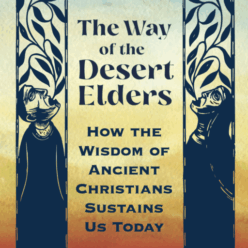Here’s what some of the previous retreat-goers said about the experience:

To learn more or sign up, join the Retreat list click HERE.

THE STORY…
Suppose you found a place…like Narnia…a magical parallel place…
This happened to me, and the only way it makes sense to tell you about it is to tell you that the land of Narnia comes to mind.
I spotted no White Witch, but I’m certain that Aslan was on the move!
I keep going back and it keeps getting better.
I’ve tried to sketch out something of what it’s like with my words. My strings of syllables are full of adjectives and I start to gush and make a fool of myself.
These words and my intensions fall short. Maybe a photo will help, I think. No, not really.
I try to tell people about it and say “come and join me”. Several of my closest friends knew to trust me and come “in faith” and it turns out that you sort of “catch something” while you’re there that draws you back again and again.
Yes, I can say, it’ll be restful, or I can say, it’ll be refreshing, or life-changing, or amazing…and of course I sound a little crazy because I’m making such a big deal about it.
But, I hope it doesn’t seem so absurd.
When you are really thirsty, water sounds wonderful.
Yet, it’s only when you taste it that you are satisfied.
Maybe you have some kind of deeper thirst. Then come!
~ABOUT THIN PLACES~
A “thin place” is where you see this dominion of the kingdom of God come into clearer focus.
And dominion doesn’t refer to a location per se, or sometimes at all.
There, the world as you know it grows strangely dimmer and smaller. You notice a threshold that separates heaven and earth too much. It seems much thinner.
This thin place can even be manifest in a person.
When you are near him or her, you sense something greater at work in a richer and more powerful unseen reality. You can’t quite put your finger on it, but you know it’s real. There is weight there.
The epitome of that is, of course, the Son of God. Jesus was the thinnest place of all when he walked among us.He is our model.
But a thin place is a location too, right?
Yes, sometimes a you sense a thin place in a location that has been somehow, or intentionally, consecrated and set apart for apprehending the deeper realities of existence. A house of worship. A garden. A home where love abides. A bookstore. A mountain perch. A bench at the beach. Everyone has probably felt a thin place, at some point.
(If you have, let me know where in the comments section)
The retreat center were I go at least 3-5 times a year is one such thin place. If you haven’t gone to a place like this, it’s nearly impossible to convince you that being there, just being, will improve your life.
I’m left “pitching the benefits” to you, like a giddy salesgirl, because conveying the actual experience is so obtuse and ethereal.
Postcards, paper ones or verbal ones, never really share a place properly.
I have a plan to return soon
Your story will unfold in new ways there.
I’ll be the guide. I’ll show you the grounds and acquaint you with the places for quiet reflection and rejuvenation, and provide you with some devotional reading and prayer material to guide your time, if you want the structure. I’ll get you started and you’ll have nothing else to do but enjoy yourself.
Are you thirsty?
We’ll meet for a (provided) hot lunch at 12:30, than after we will “gather the graces” we’ve been given, and leave for home when the time seems right. It could be the half day that changes your life. The cost is a tiny $15.
Let me know if you’re interested by signing up HERE, and I’ll prepare a spot for you and send details.
To be on the update list, click HERE.



 Remember the Sermon on the Mount?
Remember the Sermon on the Mount?